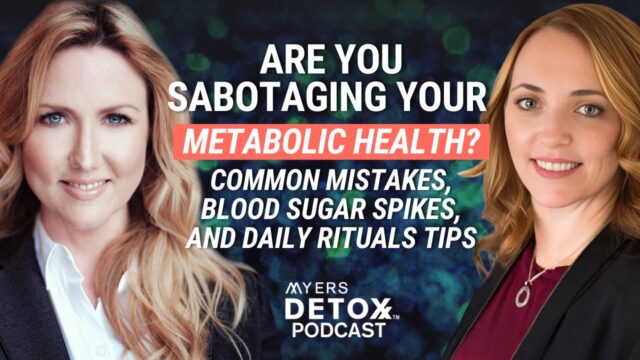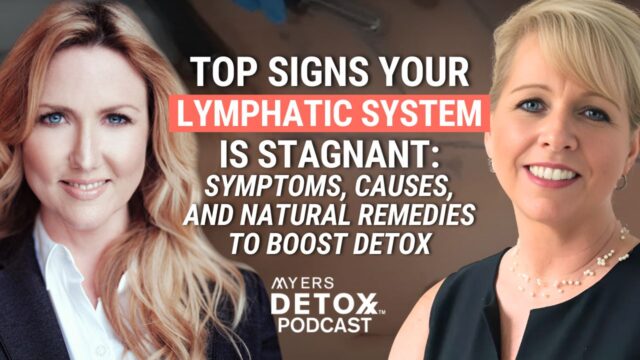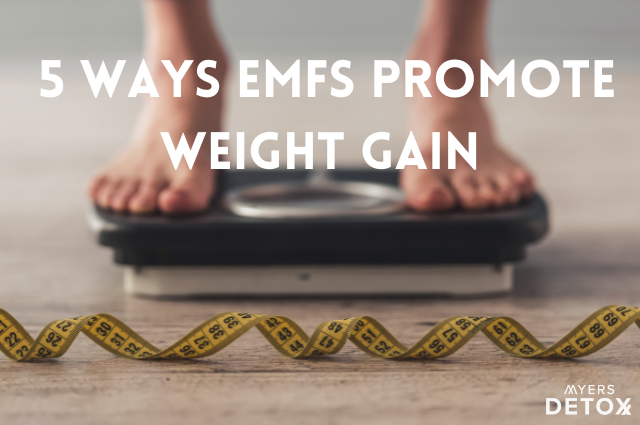Titanium is a heavy metal that’s been used for industrial purposes for decades but is now finding its way into our homes via our food, sunscreen, cosmetics, textiles, personal care products, supplements, toothpaste and more.
Why?
The growing use of nanoparticles.
Titanium nanoparticles, often in the form of titanium dioxide, are becoming a commonly used additive in various industries despite known issues around toxicity and potential health threats. The reason is because it’s a whitening agent that makes supplements, toothpaste and even food more white, which consumers prefer.
Read on to learn where titanium may be hiding in your environment, why nanoparticles are so problematic, and what you can do to protect yourself and your family.
Sources of Titanium
Titanium and titanium nanoparticles are found in a wide range of products and industries. Some are more obvious, while others you would never suspect.
One of the most common and overlooked sources of titanium dioxide is sunscreen. Titanium dioxide nanoparticles are often used in sunscreen because the small particles remain transparent on the skin while also blocking ultraviolet radiation. You’ve likely noticed that many of the all-natural sunscreen options out there leave a white residue on your skin. Well, titanium dioxide takes care of that issue due to the tiny size of the particles. Unfortunately, that tiny size also means those particles are able to absorb directly into your skin, and enter your circulation.
Other sources of titanium in our environment include[1][2]:
- Dental implants – titanium is commonly used in dental implants as it is believed to be hypoallergenic and biocompatible. Unfortunately, as you’ll learn later in this article, titanium may not be as safe for oral implantation as we once thought. Some develop an allergic reaction to titanium and titanium dental implants.
- Food – titanium dioxide is a widely used additive for food whitening and preventing food degradation in various products such as candies, coffee creamer, baking decorations, and more.
- Pharmaceuticals – similar to its use in food products, titanium dioxide provides whitening and the prevention of UV degradation in pharmaceuticals.
Other common sources of titanium and titanium dioxide include:
- Anti-fogging automobile mirrors
- Fabrics
- Food packaging
- Supplements to make them appear whiter
- Pharmaceuticals
- Bone pins, hip/joint replacements
- Dental tooth implants
- Metal plates
- Orthopedic implants
- Prostheses
- Tablet coating
- Cosmetics whiteners
- Lotions and creams
- Pigment for paints
- Jewelry
- Stainless steel watches
- Toothpaste (used to make it white colored)
- Food coloring
- Food additive
- Candy and gum (used to make it white colored)
- Iron production
- Aircraft engine & frame manufacture
- Produce such as lettuce, radish, corn
- Plastics and rubbers
Dangers of Titanium Nanoparticles
Heavy metals are dangerous enough, but when they become nanoparticles, their toxicity increases exponentially.
Nanoparticles are small particles ranging between 1 to 100 nanometres in size. As the size of a particle gets closer to the atomic scale, the material properties change. For example, nanoparticles have a larger surface area to volume ratio due to their very small size. This allows the particles to possess unique optical, physical, and chemical properties that larger materials couldn’t accomplish.
Unfortunately, although these properties may be beneficial for industrial and manufacturing use, they also create the potential for serious toxicity in our environments and bodies. The small size of nanoparticles may translate into increased biological activity, which means that your cells and tissues may interact with these particles in ways that could damage your system, potentially interfering with proteins, enzymes, and genes[3].
Nanoparticles may also impact digestion by disrupting the microarchitecture of the gut. In doing so, it’s believed that nanoparticles may interfere in nutrient absorption and could potentially lead to serious conditions like Crohn’s disease[4].
Due to their size, nanoparticles can easily contaminate the air we breathe. For people who work with these nanoparticles, lung injury becomes a significant threat[5].
On a systemic level, nanoparticles can increase the formation of reactive oxygen species due to their instability and instigate inflammation. This, in turn, may modify mitochondrial function and inhibit proper redox reactions. Your ability to ward off oxidative stress is essential to longevity, making this disruption a threat for accelerated aging[6].
In addition to acute exposure, long-term exposure to nanoparticles can have systemic effects, impacting your immune and cardiovascular systems. By instigating pro-inflammatory cytokines, nanoparticles can cause damage to several organ systems, including your lungs, heart, liver, and brain[6].
Food Safety
Back in 2021, the European Food Safety Authority declared that titanium dioxide is no longer considered safe when used as a food additive due to concerns about genotoxicity (DNA damage). As a result, titanium dioxide is now banned as a food additive in Europe[7].
But not in the US.
Strides are being taken in the US, although not as swiftly as in the EU. The California Food and Safety Act (Assembly Bill 418) is currently being considered, which would ban the sale of food items containing toxic compounds. Initially, titanium dioxide was on the list of food additives to be banned. However, as of September 8th 2023, titanium dioxide was removed from the list[8].
Thus, the removal of titanium dioxide in our food products is an ongoing debate.
Symptoms of Titanium Exposure
Depending on the route of exposure, titanium toxicity can show up in many different ways. Some common symptoms of acute titanium exposure include[9][10]11][12]:
- Fatigue
- Headaches
- Dizziness
- Tremors
- Nausea
- Vomiting
- Blurring of vision
- Respiratory inflammation
- Lymphedema
- Hyperpigmentation of the nails and skin
- Brain injury
- Cellular damage
Possible Related Health Conditions
Titanium Toxicity Due To Dental Implants
Titanium is commonly used in dental implants due to its perceived biocompatibility. Unfortunately, studies show that this heavy metal may be causing serious harm due to its ability to leach into surrounding tissues.
Specifically, research shows that titanium implants can cause the generation of titanium alloy particles and ions, which deposit into surrounding tissues. This deposition can result in bone loss due to inflammatory reactions caused by titanium and ultimately create a failure in the dental implant itself[13][14].
Even worse, however, is that these particles can systematically deposit in other tissues in your body, leading to toxic reactions such as yellow nail syndrome.
Some research also shows that titanium implants can cause allergic reactions in a small number of people[15]. And this would make any reactions to titanium implants worse in susceptible individuals.
Lung Disease
Studies show that inhaling titanium dioxide nanoparticles can result in lung injury due to excessive inflammation. With repeated exposure, titanium can lead to bronchitis and shortness of breath and, over time, may result in fibrosis of the lung tissue[16].
In animal studies, prolonged exposure to titanium resulted in tumor formation and increased lung cancer risk[17].
Intestinal Inflammation
Due to the amount of titanium dioxide in our food supply, this chemical’s impact on our gut is nothing to be ignored.
Studies show that titanium dioxide can directly impact our gut wall, leading to issues like gut inflammation and leaky gut.
Furthermore, ingested titanium may also create dysbiosis in our gut bacteria and lead to other issues, such as a reduction in the production of short-chain fatty acids (fuel for our gut cells), reduced mucus production, and impairments in the function of intestinal goblet cells[18].
One study found that children with inflammatory bowel disease had high levels of titanium dioxide in their lower digestive tract, incorporated into lymphatic tissue. This suggests that the titanium dioxide was involved in the inflammatory process in the gut[19].
Detecting Titanium Toxicity
If you’re concerned about your titanium exposure, I highly recommend taking a heavy metals test. The good news is that heavy metals love to hide in your hair, which means you don’t have to go to a lab or have blood drawn; you can take a Hair Mineral Analysis (HTMA) right in the comfort of your own home[20].
An HTMA can give you a snapshot of your body’s current mineral composition, including titanium absorption and several other concerning heavy metals such as lead, mercury, aluminum, and more.*
It’s so important to get heavy metals testing done at some point in your health journey. Your HTMA will show you everything you need to guide you towards better health and wellness. I am so thankful for the robust health and anti-aging benefits that I enjoy today. And for this, I credit heavy metal and chemical detox. And it all started with an HTMA.*
How To Support Your Body’s Detox Systems and Support the Natural Removal of Titanium
Supporting your body’s natural ability to detox environmental pollutants can be tricky as these compounds (like titanium) like to hide in your tissues. That said, with the right nutrients, you can gently assist your body’s detoxification processes to loosen the grip on metals and allow them to be excreted once and for all.
But before we get into how to boost your body’s natural detox mechanisms and clear your detox pathways to support the removal of titanium – we first need to address how you can avoid this heavy metal in the first place. Some foods will label titanium dioxide right on the ingredients label, but this isn’t always the case. That’s why avoiding highly processed foods like candy and gum is always a good idea.
The same goes for cosmetics; you may see TiO2 or titanium dioxide on the label, but this may not be true with all products. The way around this is to choose natural cosmetic and personal care brands that avoid whiteners, colorants and additives like titanium dioxide.
As for supporting your system’s natural ability to detox the titanium that may already be in your body, two supplements that can specifically help with titanium include DMSA and Citrus Pectin.*
DMSA (dimercaptosuccinic acid) is a chelating agent that binds heavy metals like titanium and removes them via your kidneys and bile. This chelator is commonly used for lead poisoning and is known to assist with the excretion of several other heavy metals, including mercury, arsenic, and cadmium[21][22].
Citrus Pectin is a soluble fiber obtained from the peels, pulp, and seeds of citrus fruits. This natural chelating agent is gentle yet very effective at gently surrounding and binding to pollutants like heavy metals and helping to remove them from your body. Research shows that Citrus Pectin may result in up to a 74% reduction in heavy metals without any side effects[23][24].*
Takeaway
Titanium has always been a heavy metal of concern, but with the growing use of titanium dioxide nanoparticles, it’s making its way into our bodies at an alarming rate.
The small particle size of nanoparticles allows these substances to pass through our cell membranes and impact us on a deep biological level. And although there are some people advocating for removing titanium dioxide from our food and personal care products, we still have a way to go before we can breathe easy.
This means that the responsibility is still in our hands to ensure that we choose products that are free from these additives and that we’re supporting our bodies as best we can to ensure optimal detoxification. The stronger our detoxification defenses, the more protection we offer our bodies against substances that put our health at risk and accelerate aging.
If you have any concerns about your titanium exposure, I recommend ordering an HTMA to gain insight into your mineral deficiencies and potential heavy metal load.









